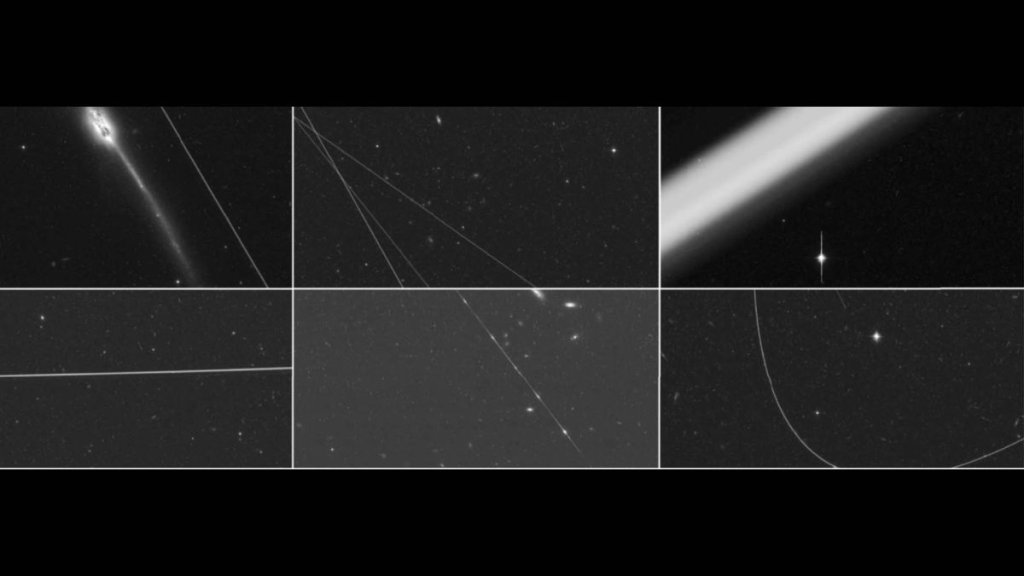
Hubble Space Telescope images increasingly affected by Starlink satellite streaks (Image Credit: Space.com)
The effect of satellites on our view of the universe is getting worse, an examination of images taken by the Hubble Space Telescope has revealed.
The findings may confirm the fears of astronomers who argue that satellite constellations such as SpaceX’s fleet of over 3,500 Starlink spacecraft stand to severely impact astronomy.
These fears were initially confined to astronomers working with ground-based observatories, but as humanity’s exploitation of the space around our planet has burgeoned and plans for so-called “mega-constellations” of satellites have progressed, those concerns have spread to colleagues working with space-based instruments.
To reach their findings, a team of researchers including over 11,000 citizen scientists from the Hubble Asteroid Hunter project scoured through images produced by the Hubble Space Telescope between 2002 and 2021.
The team found that 2.7% of Hubble’s images with a typical exposure time of 11 minutes were crossed by satellites. Additionally, the probability of finding satellite trails in Hubble images has increased with time from 3.7% in 2002 to 5.9% in 2021.
Hubble’s orbit has decayed since its launch in 1990, bringing the telescope to an altitude of around 334 miles (538 kilometers) above Earth. In this lower orbit, the telescope has become increasingly sensitive to satellites in higher orbits. These spacecraft affect the images produced by Hubble by appearing as bright steaks as they race past the space telescope during the period its lens is open to collect light from the universe.
“With the growing number of artificial satellites currently planned, the fraction of Hubble Space Telescope images crossed by satellites will increase in the next decade and will need further close study and monitoring,” the authors write in a study published in the journal Nature Astronomy. (opens in new tab)
The volunteer citizen scientist collaborators looked at Hubble images and highlighted those marred by bright satellite streaks. Two machine-learning algorithms were then used to examine the volunteer classifications, one for exposures of 11 minutes, and the other for exposures of 35 minutes. The examination revealed trails were consistent between images taken with Hubble over the two exposure times.
Surprisingly, streaks were found even in images taken prior to the deployment of the Starlink megaconstellation. Astronomers are concerned that the problem is only bound to get significantly worse, as only a small fraction of planned satellites is currently in orbit; eventually, SpaceX hopes to have as many as 42,000 Starlink satellites in low Earth orbit. British firm OneWeb has permission to launch a constellation of 648 broadband satellites, and has expressed the desire to add to that up to 7,000 units with future upgraded spacecraft versions. The European Southern Observatory (ESO) predicted in 2020 that by 2030 there could be as many as 75,000 low-orbit satellites around Earth.
The new findings, coming before swarms of artificial satellites reach orbit, will hopefully help establish a baseline for future studies that will assist astronomers to better assess the impact of megaconstellations on astronomy.
Follow us on Twitter @Spacedotcom (opens in new tab) or on Facebook (opens in new tab).





